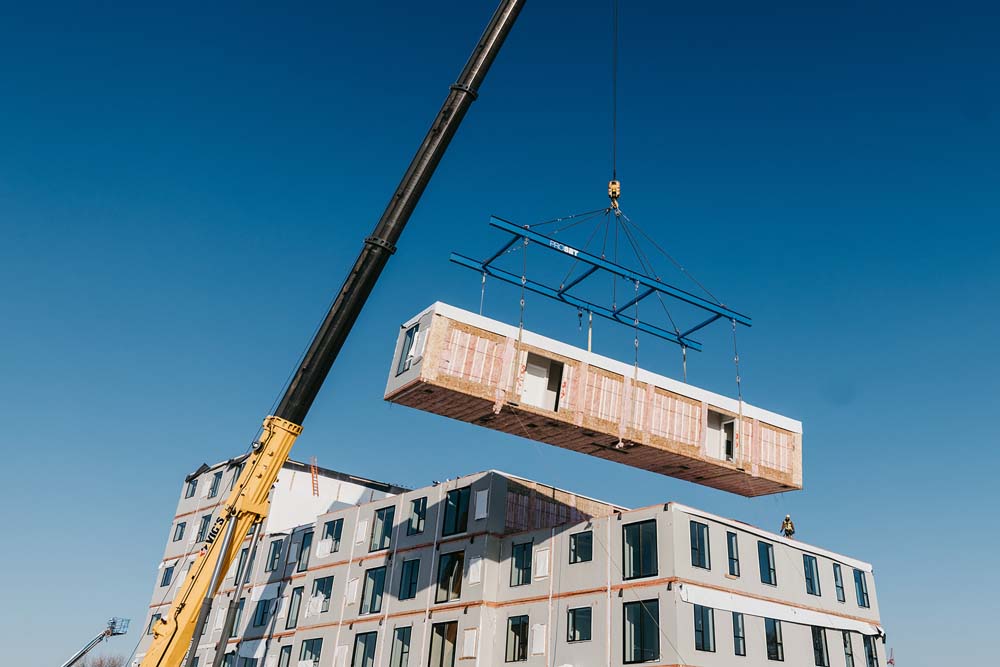The Housing Innovation Report by the Itasca Group highlights the importance of modular innovation to address the Minneapolis-St. Paul region’s affordability housing crisis.
Industry, government and nonprofit partners have a plan to economically accelerate housing production in the Twin Cities area to fill one of the largest availability and affordability gaps in the country.
The problem has been around for more than a dozen years. Now, there is consensus that the region must accelerate production to 18,000 units annually of owner-owned and rental units through 2030.
“It’s a crisis,” said Collin Barr, executive with developer Ryan Companies and volunteer chair of the Itasca Project’s housing innovation and affordability task forces.
“We are losing workforce to other big markets because of better availability of housing, including my hometown of Denver, Colorado,” he said. “More supply. More affordable. It’s important for business and community leaders to pay attention. We’re starting to get traction.”
This also is an opportunity to grow the local workforce and our economy.
Barr and other industry, government and developer stakeholders last year started to study the problem through Federal Reserve, government and industry data. The recommended solutions are in Itasca Project’s recently released Housing Innovation Report.
The Itasca Project is an employer-led, 80-member alliance that seeks “new and better” ways to improve economic competitiveness in the Twin Cities. People who have adequate housing at the cost of 30% or less of household incomes are happier workers and citizens.
Gov. Tim Walz’s $1 billion-plus legislative initiative over the next two years for housing infrastructure bonds also would provide income-based rental assistance, targeted financial incentives, veterans housing and restoration of the historic building tax credit to accelerate construction and renovation.
“That’s historic and will leverage billions in private sector investment and greases the wheel on production,” said Deidre Schmidt, an Itasca task force member who heads CommonBond Communities, the area’s largest developer-manager of affordable housing. “The Itasca study really connected the realities of production and assigned numbers and made the economic growth connection to the region’s prosperity in a clear and transparent way. We must invest. Not just government. Developers and builders, business and welcoming communities.”
The Itasca housing work group’s “most promising” innovations include: assembling and preparing large parcels of land for more multifamily housing near transit and transport corridors; reduced costs with more modular, factory-built housing components that are less expensive than build-on-site “stick-built” traditional housing. And lower costs with lower property taxes on affordable housing, standardized local regulations and reduced parking requirements.
Read more at the startribune.com
